I seem to have fallen into a bit of a rabbit hole of shoe-mount light meters. The latest to land with me is the Doomo Meter D – a new LED readout, dial based meter that is *cough* somewhat reminiscent of the Voigtlander VCii
In fact, it’s similarity to the long-since discontinued Voigtlander was what intrigued me the most about it. I really love that meter, and despite all these new-to-market shoe mount meters, with their tiny size and speed of use, the Voigtlander still remains the one I am most drawn to. There’s just something instantaneous and easy about the understanding the meter readout gives that makes it a pleasure to use.
The biggest issue with the VCii – at least from the point of view of someone who writes about these sorts of things – is that it’s difficult to recommend to people. These days they are just that little bit too hard to come by on the second hand market place. And when they do pop up, they sell for a little bit too much money.
When I spotted the Doomo Meter D, I was therefore very interested to see if it could make an ideal alternative recommendation to the Voigtlander. Could it be the new perfect shoe-mount meter for people looking for that more “analogue” feeling experience that comes with using dials rather than a digital screen and buttons? The short answer is yes… but, it’s a yes that comes with something of a caveat.
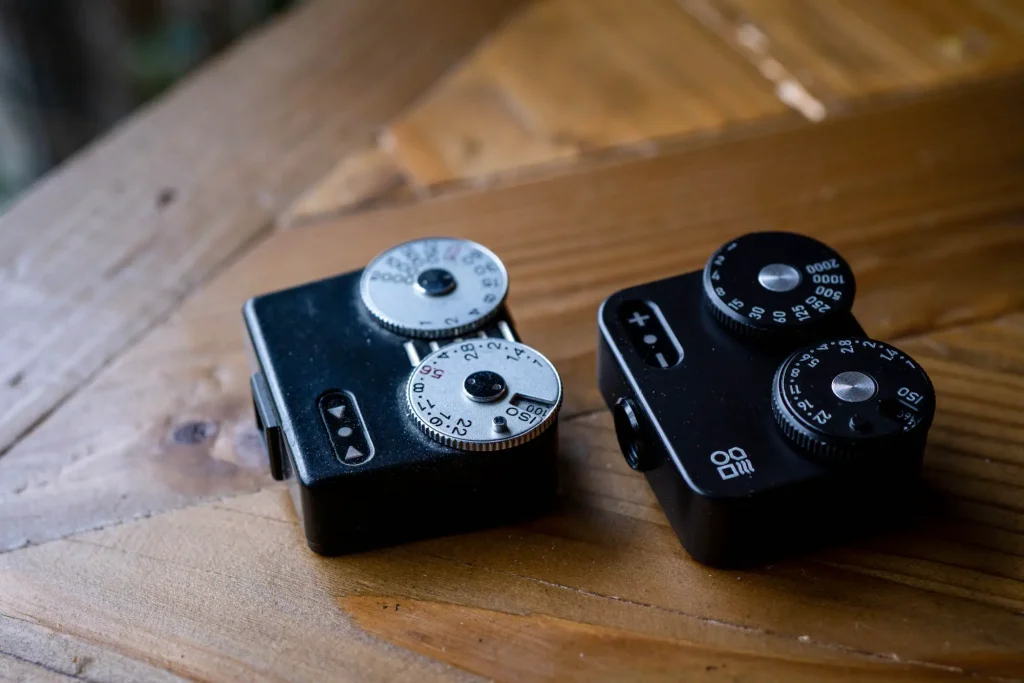
The Doomo Meter D
The Doomo Meter D is a dial-controlled, shoe-mount, reflective-only light meter. It comes in three colour-ways, the all black version I have, silver version and a black-with-silver-dials version (that looks even more similar to the VCii). Alongside the dials, the only other features are the LED readout, a meter button that activates the meter on the back, a window on the front with the light receptor behind it, and a foot that comes separated from the meter and can be screwed to the bottom in a couple of different places (screws and slightly crappy screwdriver included in the box). The LED readout is given via 3 lights, a red – and + for under and overexposed respectively, and a green circle of correct exposure.
It has a narrower settings range than the digital meters I’ve otherwise been been playing with recently, though it does have a metering range of EV 1-20. As you can see, shutter speeds range from 1 second to 1/2000th and apertures from f/1.0 to f/22. The ISO selection is hidden within the aperture dial and ranges from 25 to 6400 ISO. By rotating the top of the dial, you select your desired exposure index (ISO), and then rotate the dial as a whole to choose your aperture.
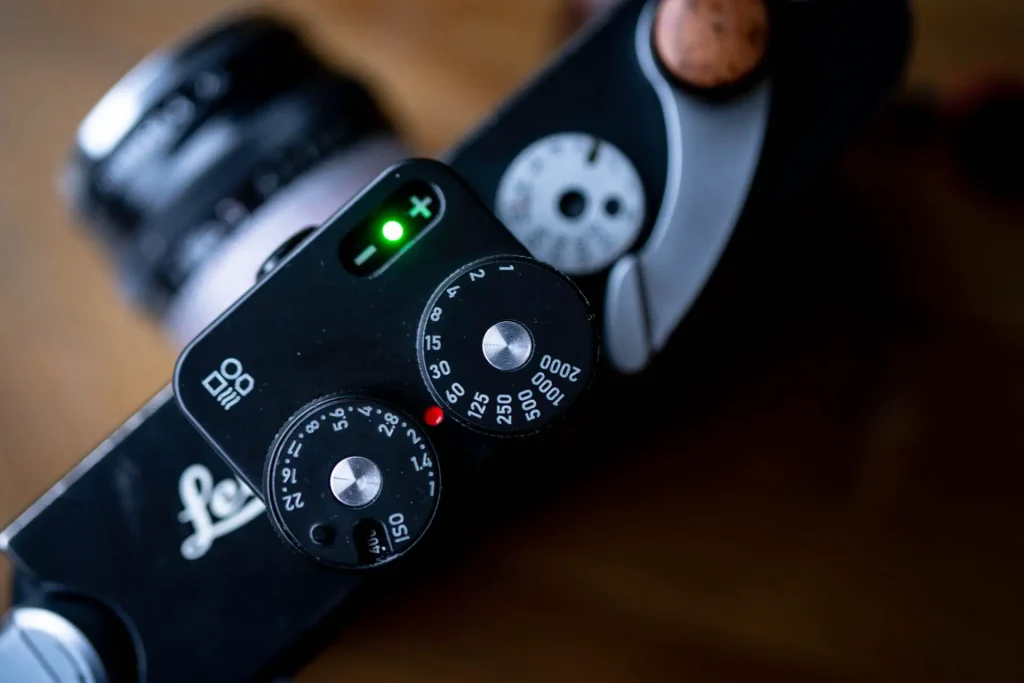
The two dials the make for a metering system that can effectively be used in either shutter or aperture priority “mode”. For shutter priority you choose your desired shutter speed, press the meter button to take and temporarily lock in the reading and then rotate the aperture dial until the green dot is lit. For aperture priority, you select the desired aperture, press the button and rotate the shutter dial. And of course, a system somewhere between the two can also be used. After pressing the button when rotating rotating the dials, the settings are determined from those that line up with the red dot between the dials. When the green dot lights up, you have yourself correct exposure – in theory at least.
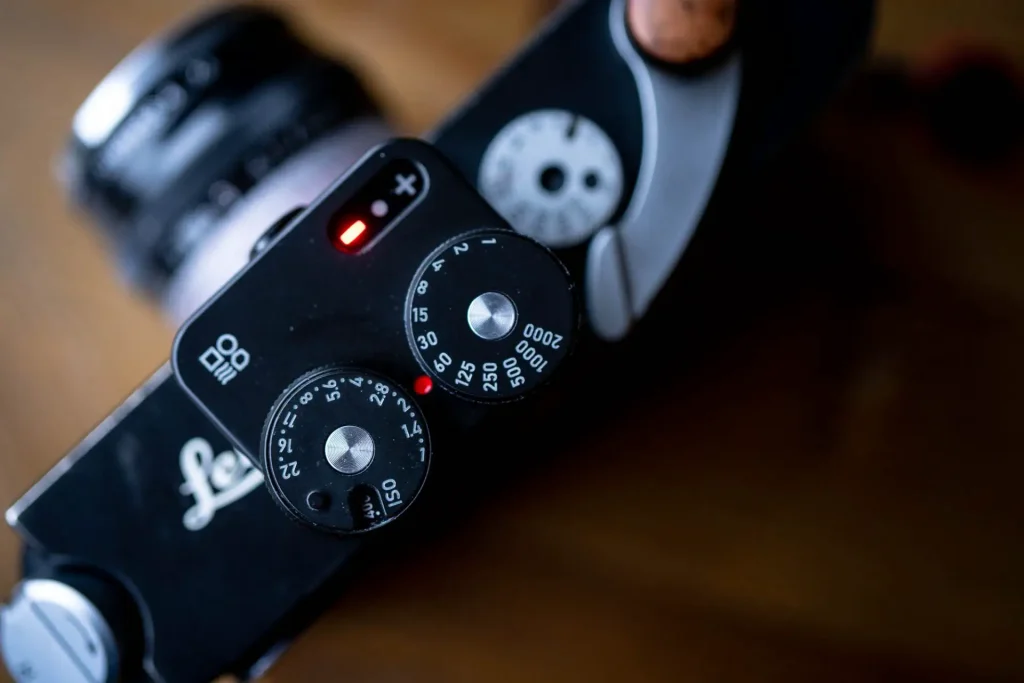
Build quality
One thing that immediately jumped out at me when I first handled the Doomo Meter D was just how well made it feels. Unlike the Hedeco which has a this sheet of aluminium around a 3D printed inner and the Reveni which is entirely 3D printed, the Doomo Meter D has an entirely metal housing with a screw in metal foot. The light meter receptor has a tiny bit of glass or clear plastic in front of it, the aperture dial rotates smoothly, the shutter dial with nice clicks, and even the button has a nice click to it. In short, it’s a very nice feeling bit of kit, and certainly has a better quality feel than the Hedeco and Reveni. In fact, it’s right up there with the Voigtlander, if not better quality feeling – though some of that might be down to the fact that my Voigtlander is ancient now. It’s also a gnats whisker smaller than the VCii.
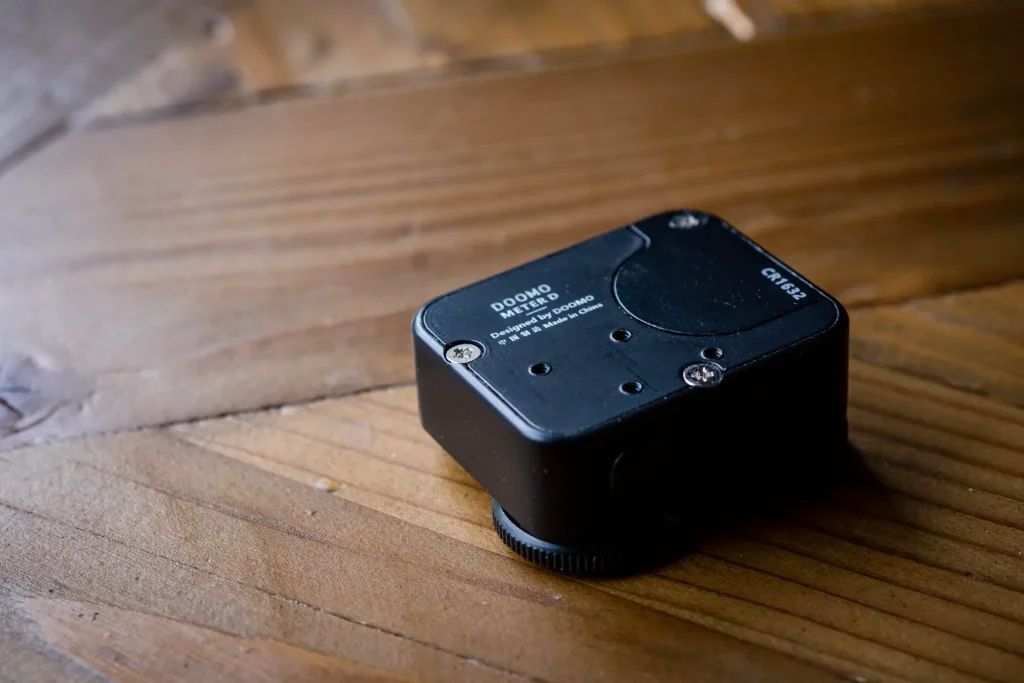
Battery
The Doomo Meter D takes a CR1632 battery. Heard of one of those before? No, nor me. Unfortunately it didn’t come with one, so I had to order one off eBay. They were plentiful on there, so I assume they’re not uncommon – I was just a little surprised it didn’t run off an LR44. I can’t confirm or deny the stated 60 hours, but it’s certainly not run out in the time I’ve been using it.
Metering accuracy
When I mentioned correct exposure above, I said that the Doomo should give you correct exposure “in theory at least”. There are of course plenty of ways user-error can come into play when metering, but as a kick off, it’s good to have a meter that is at least going to give a “correct” – at least by your standards – reading when all the variables are otherwise understood and under control.
Unfortunately, at least for the way I meter I find the Doomo Meter D to read slightly under when compared to metering as similarly as I can with the Voigtlander. Interestingly, I got more similar results from the Doomo Meter D and my Lumu app when measuring uniformly lit plain coloured surfaces. Make what you will of that.
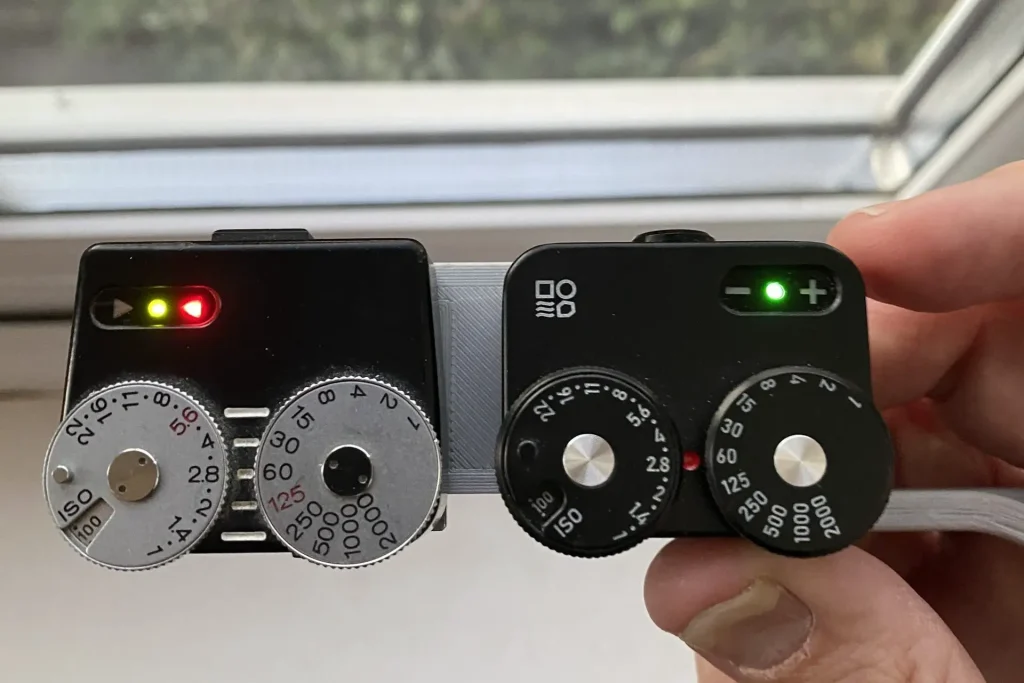
This leads me to caveat I mentioned earlier. Unlike the Hedeco and Reveni I have recently reviewed, the Doomo Meter D can not be user calibrated. As a result, were I to commit to using the Doomo Meter M, I think I’d find myself compensating by setting the ISO to a speed a-bit-of-a-stop slower than my desired exposure index. That is to say, if I wanted to shoot at 400, I’d set the meter to somewhere closer to the 200 setting just to make sure I wasn’t going to fall foul of any underexposure.
Doomo Meter D Vs. the Voigtlander
The metering accuracy aside, the user experience and meter as a whole is very similar to that of the Voigtlander VCii with just a few very small differences – some positive, some negative.
To begin with, the battery compartment on the Doomo Meter D is a significant improvement over the Voigtlander. I have to bluetack my VCii battery compartment short of it ditching the batteries on the floor on a whim. The Doomo Meter D battery compartment is screwed shut.
I also prefer the – o + readout on the Doomo Meter D over the > o < on the VCii. The Doomo is more intuitive, after a while of not using the VCii I have to remind myself which LED means over and which means under.
For those two plus points of the Doomo, there is one thing I really like about the VCii and that’s the reciprocal readings denoted by the extra lines that join up the shutter and aperture settings. Of course you can still draw these lines imaginarily on the Doomo Meter D, but having them on the VCii just feels like it makes alternative readings explicit at a glance.
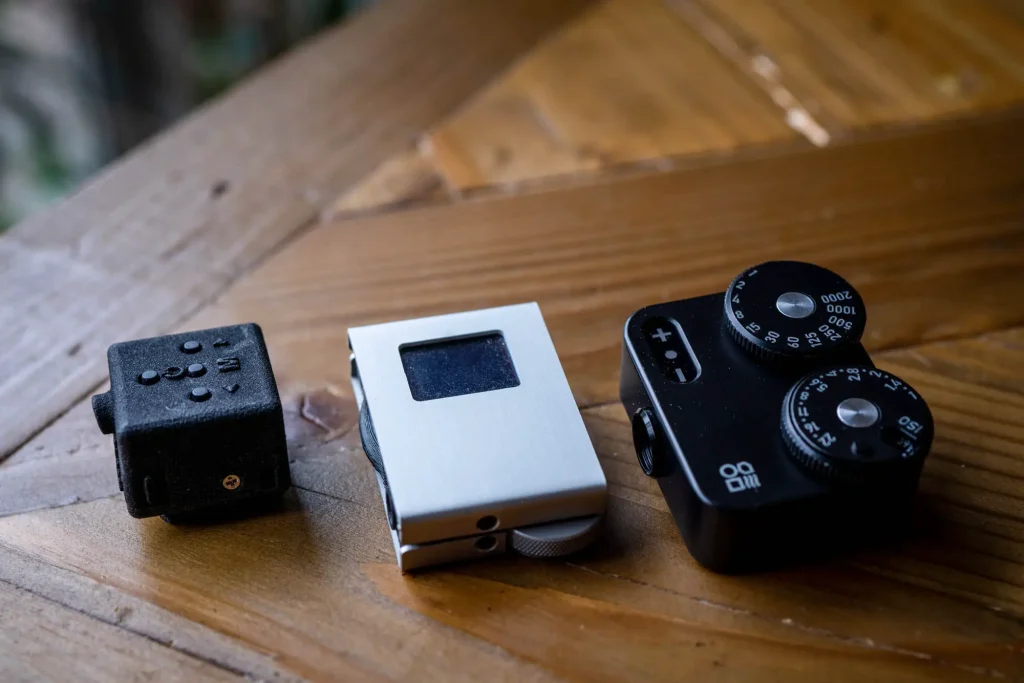
Doomo Meter D vs the others
As I alluded at the top of the post, I have reviewed a few shoe-mount meters now. I have a few more coming too, and will ultimately do a comparison post of them all. In brief though, compared to the Hedeco and Reveni I have so far looked at, the Hedeco scores points for speed of use, the Reveni for its tiny size, and as I’ve said the Doomo for its more “analogue” nature. Both Hedeco and Reveni can be user calibrated too.
Final thoughts
After the other two meters I have reviewed recently, I can’t help being a little bit disappointed that the Doomo Meter D can’t be user calibrated. The Reveni I received was slightly out by my reckoning, but I was able to tweak it to taste with ease. The Hedeco was on-the-nose accurate but could also be calibrated to taste if I’d wanted to. With the Doomo Meter D there is no tweaking to taste or for the sake of it being apparently out of whack. The readings it takes are what they are, and there’s no deviation from that. This would be fine if it was accurate to my needs, but it’s not quite there for me. Your mileage may vary.
Of course, the slight inaccuracy can be worked around by setting a different exposure index. There’s nothing to say that the next person might find it perfectly accurate, or at least perfectly acceptable for their needs, and to be fair if it is out, it’s not by much anyway.
And all that said, apart from it not being quite accurate to my taste, I otherwise really like the Doomo Meter D. The build quality really is excellent, it feels very well made and though it doesn’t have the lines joining up the reciprocal settings that I like on the Voigtlander, the screw-sealed battery compartment and – o + readout appeal to me above and beyond what the Voigtlander offers!
You can find the Doomo Meter D on there website here.
Also available on Kamerastore
Share this post:
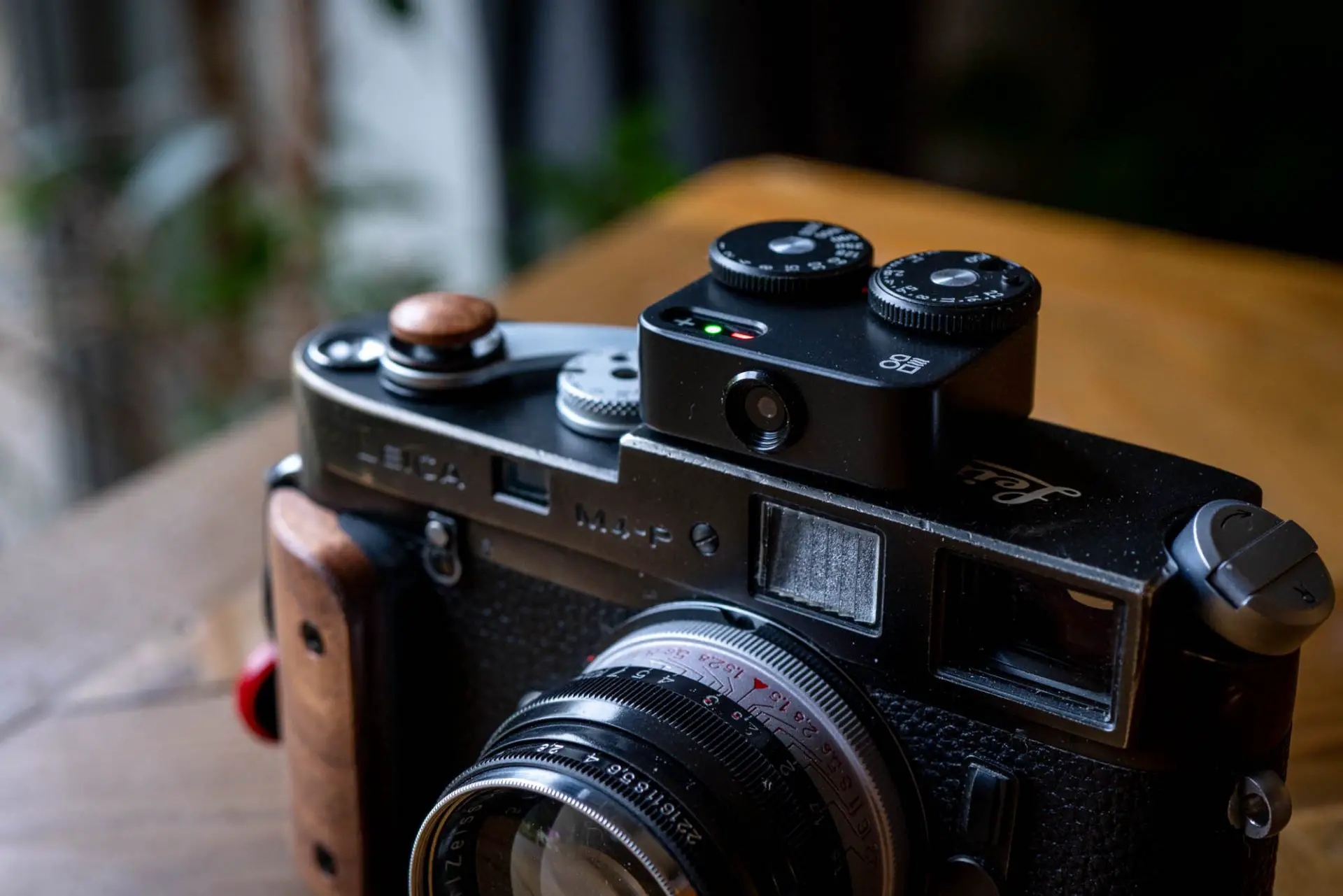
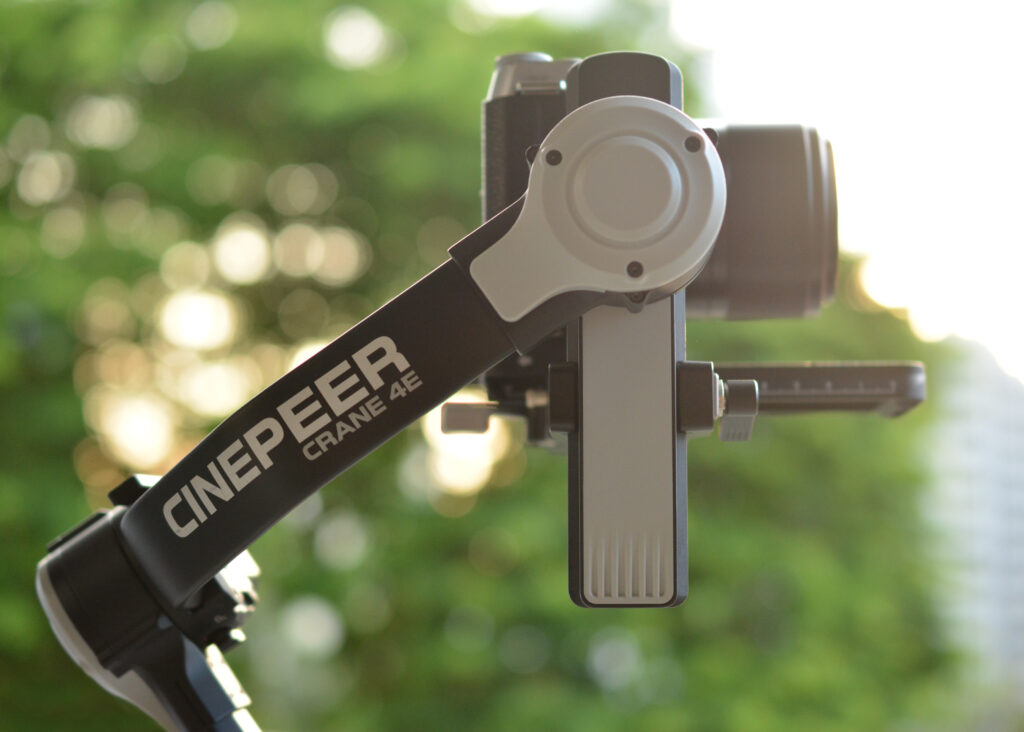
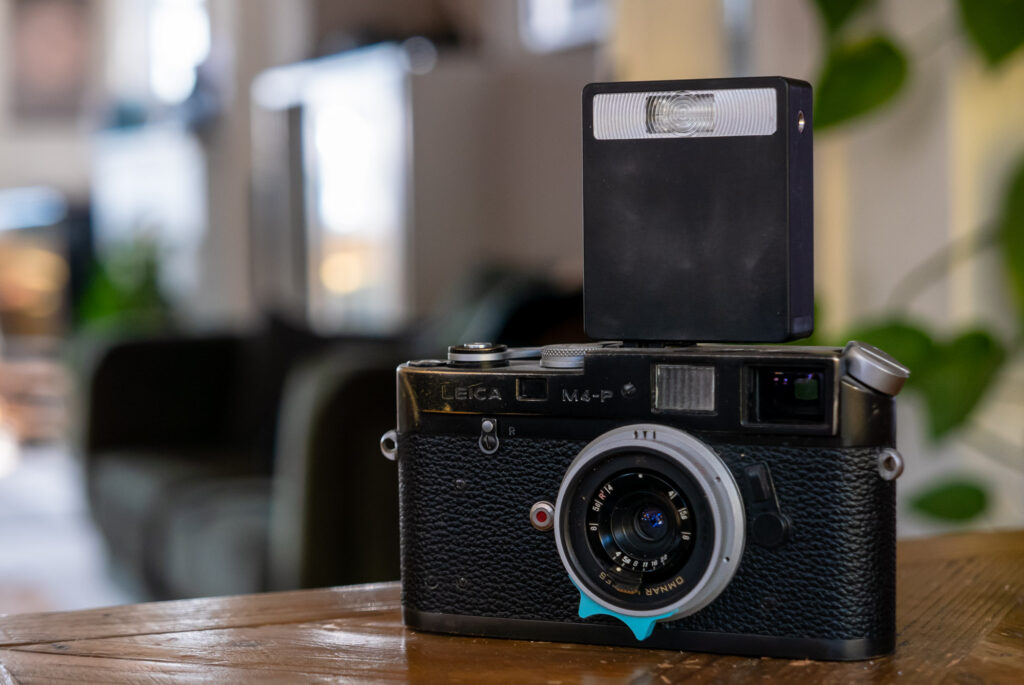
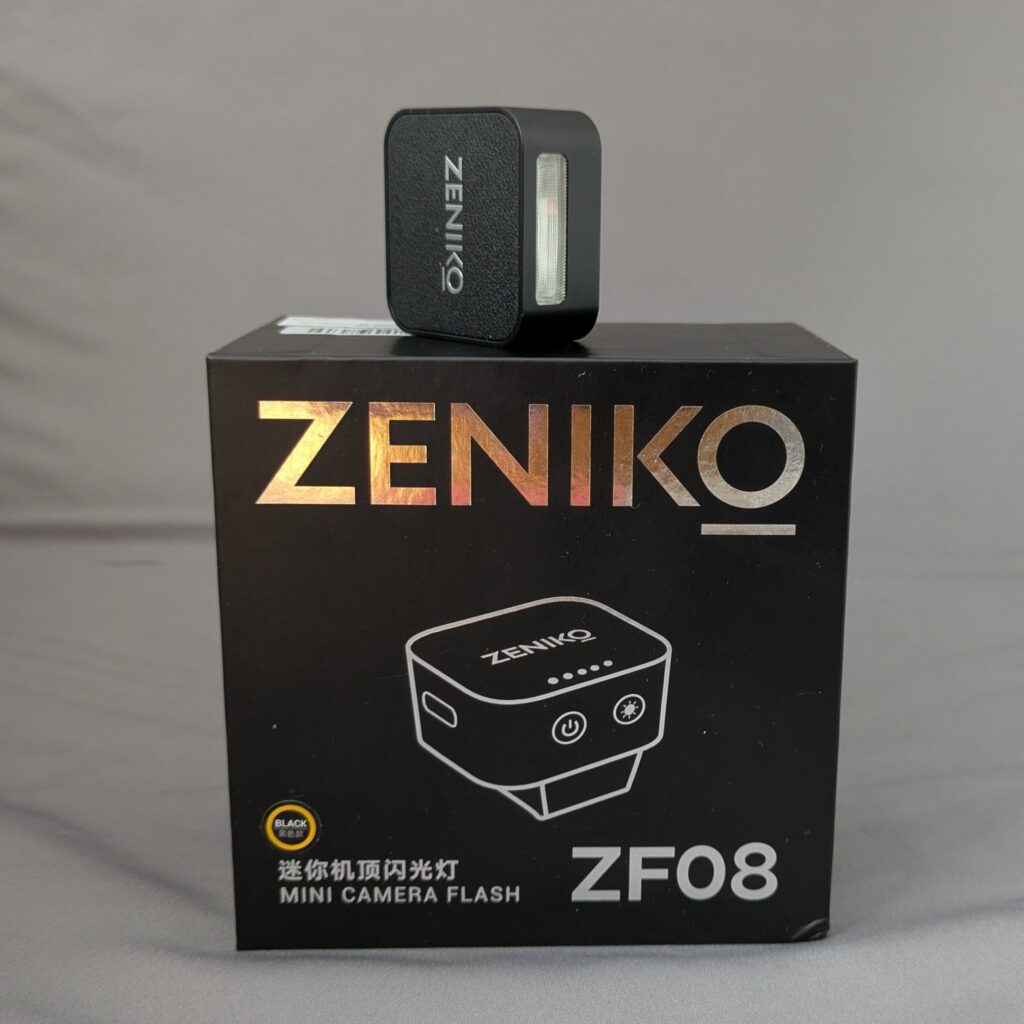




Comments
Philip Lambert on Doomo Meter D Light Meter Review – for the “Analogue” Experience
Comment posted: 08/02/2021
As to meter accuracy, the first film you get back from processing will give you a clue. Apart from that
(a) How accurate are the shutter speeds in your camera?
(b) I prefer slight overexposure and might set 200 iso print film at 160 on the meter
(c) Do you get inaccurate exposure sometimes using the meter you have already and if so, is it your technique that needs refining? Mine does.
(d) Does a meter become inaccurate as the battery reaches end of life? I use a selenium meter out of doors (no battery and smaller than my CDS meters.)
Comment posted: 08/02/2021
davesurrey on Doomo Meter D Light Meter Review – for the “Analogue” Experience
Comment posted: 08/02/2021
Comment posted: 08/02/2021
James Evidon on Doomo Meter D Light Meter Review – for the “Analogue” Experience
Comment posted: 08/02/2021
Comment posted: 08/02/2021
Stefan Wilde on Doomo Meter D Light Meter Review – for the “Analogue” Experience
Comment posted: 08/02/2021
All the best from Hamburg
Stefan
Comment posted: 08/02/2021
Comment posted: 08/02/2021
Comment posted: 08/02/2021
Comment posted: 08/02/2021
Stephen J on Doomo Meter D Light Meter Review – for the “Analogue” Experience
Comment posted: 09/02/2021
I don’t particularly want look up your sleevies to view where you keep your armies, but would I be right in thinking that you have one for the ‘zonies’ coming up in the form of the Reveni Spot meter?
If so, I am looking forward to see what you make of that before I jump in!
Comment posted: 09/02/2021
Kodachromeguy on Doomo Meter D Light Meter Review – for the “Analogue” Experience
Comment posted: 11/02/2021
Leo Tam on Doomo Meter D Light Meter Review – for the “Analogue” Experience
Comment posted: 16/02/2021
Comment posted: 16/02/2021
Reveni Labs Light Meter review - Kosmo Foto on Doomo Meter D Light Meter Review – for the “Analogue” Experience
Comment posted: 13/03/2021
Reporting on the Reveni: A Rundown & Review - Kameratori on Doomo Meter D Light Meter Review – for the “Analogue” Experience
Comment posted: 11/05/2021
M. on Doomo Meter D Light Meter Review – for the “Analogue” Experience
Comment posted: 02/09/2021